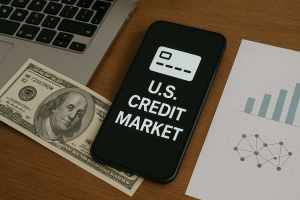In the United States, pursuing higher education often comes with a hefty price tag. As tuition costs continue to rise, many students and their families turn to student loans to bridge the financial gap.
However, navigating the world of student loans can be overwhelming, with various options and considerations to weigh. Understanding the landscape of student loans in the USA is crucial for making informed decisions about financing education.
This comprehensive guide explores the different types of student loans available, along with important considerations for borrowers. To understand all the details about the world of student loans, just read the following text:
Federal Student Loans: A Foundation for Financial Aid

Federal student loans, administered by the U.S. Department of Education, provide numerous benefits for borrowers. They commonly feature fixed interest rates and adaptable repayment plans, rendering them highly favored among students. These loans primarily comprise two categories: Direct Subsidized Loans and Direct Unsubsidized Loans.
Direct Subsidized Loans
Direct Subsidized Loans are available to undergraduate students with demonstrated financial need. The government pays the interest on these loans while the student is in school at least half-time, during the grace period after graduation, and during deferment periods.
Direct Unsubsidized Loans
Direct Unsubsidized Loans are available to both undergraduate and graduate students, regardless of financial need. Unlike subsidized loans, borrowers are responsible for paying all interest accrued, even while in school. However, these loans offer more flexibility in terms of eligibility and borrowing limits compared to subsidized loans.
Private Student Loans: Exploring Alternative Financing
Private student loans are offered by banks, credit unions, and other financial institutions to help cover educational expenses not met by federal aid. While they can be useful in filling funding gaps, private loans often come with higher interest rates and less favorable terms compared to federal loans.
Considerations Before Taking Out Private Loans
Before opting for private student loans, it’s essential for borrowers to carefully consider several factors. These include interest rates, repayment terms, co-signer requirements, and potential fees.
Additionally, borrowers should exhaust all federal loan options before turning to private lenders, as federal loans typically offer more borrower protections and benefits.
Loan Repayment Strategies: Managing Debt Wisely
Managing student loan debt doesn’t end after graduation. Developing a repayment strategy is crucial for staying on top of payments and minimizing long-term financial strain. Several repayment options are available to borrowers, including standard repayment, income-driven repayment plans, and loan consolidation.
Standard Repayment
Under the standard repayment plan, borrowers make fixed monthly payments over a 10-year period. While this option typically results in higher monthly payments, it allows borrowers to pay off their loans faster and with less interest compared to other plans.
Income-Driven Repayment Plans
Income-driven repayment plans adjust monthly payments based on the borrower’s income and family size. These plans offer relief to borrowers experiencing financial hardship by capping payments at a percentage of their discretionary income. However, extending the repayment period can result in paying more interest over time.
Loan Forgiveness and Discharge Programs: Relief for Qualified Borrowers
Loan forgiveness and discharge programs offer relief for borrowers who meet certain eligibility criteria. These programs may forgive a portion or all of a borrower’s remaining student loan balance, providing significant financial assistance.
Public Service Loan Forgiveness
Public Service Loan Forgiveness (PSLF) is available to borrowers who work full-time for qualifying employers in the public sector or for certain nonprofit organizations. After making 120 qualifying payments, the remaining balance on the borrower’s Direct Loans may be forgiven.
Discharge Due to Disability or Death
In cases of permanent disability or death, borrowers may qualify to have their federal student loans discharged. This discharge relieves borrowers or their survivors from the obligation to repay the remaining loan balance.
Navigating the world of student loans in the USA requires careful consideration and planning. Whether opting for federal loans or exploring private financing options, borrowers must weigh the advantages and drawbacks of each choice.
Additionally, developing a repayment strategy and staying informed about available forgiveness programs are crucial steps in managing student loan debt effectively.
By understanding the options and considerations involved, students and their families can make informed decisions about financing higher education and achieving their academic goals.







